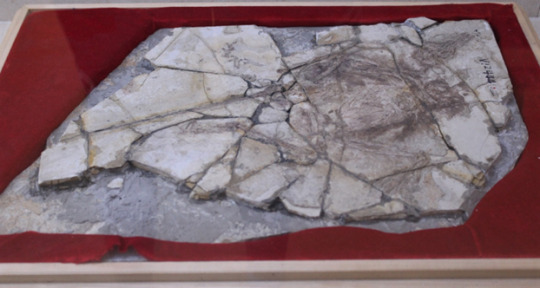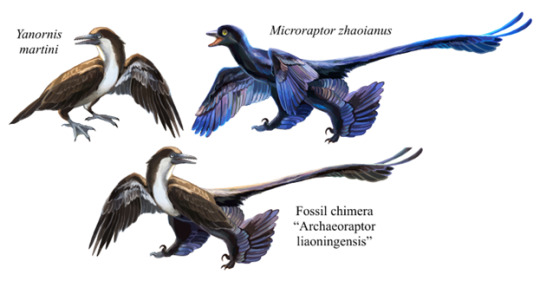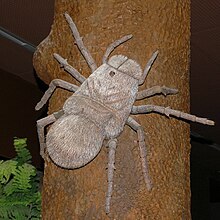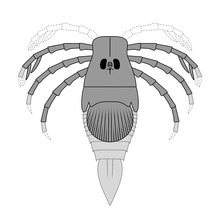Note
Give me as much information about the super epic shark Megalodon as much as you can I need it for school for real!!!
Megalodon Facts!
Hi and thanks for your question! megalodon is pretty well known but here are some more obscure facts I found that will hopefully help!
Megalodon teeth were used by a variety of pre-contact cultures in North America. It is thought that they were valued artifacts and/or that they were modified to be used as weapons. Megladon teeth were mined from Chesapeake Bay and traded with other cultures nearby.
Megalodons used to be classified in the same genus as Great white sharks (Carcharodon) because of the similarities between their teeth. The current model is that Megalodon belongs to the Otodus genus and the similarities between its teeth and Great white sharks is a case of convergent evolution making them appear similar. They (megalodons and great white sharks) would still probably look somewhat similar based on how we have interpreted other ancient sharks and their similarity with modern lamnids such as great white sharks.
They were also widely distributed, with fossils being found all over the world. Based on where we have found megalodon teeth we can infer its tolerance of environmental temperatures is between 1-24 C (34-75 F). They where probably able to handle such cold temperatures because they were mesotherms. That is when an animal isn't quite an endotherm (able to create our own heat) but isn't an ectotherm (can't regulate their body temperature like most snakes for example). They had the ability to affect their body temperature via their metabolism but when the temperature in the environment is decreased their body temperature will also decrease. It is also thought that as body size increases in mesotherm animals there body temperature increases because of the square cube law. It is hypothesized that one of the reasons megalodon was so large. (you can read more in the article cited below).
Also megalodons have gone extinct no matter what the discovery channel says
Hope this helps!!
Sources bellow:
-------------------------------------------------------
papers:
Lowery, Darrin, et al. “INTEGRATED GEOLOGY, PALEONTOLOGY, AND ARCHAEOLOGY: NATIVE AMERICAN USE OF FOSSIL SHARK TEETH IN THE CHESAPEAKE BAY REGION.” Archaeology of Eastern North America, vol. 39, 2011, pp. 93–108. JSTOR, http://www.jstor.org/stable/23265116. Accessed 27 Feb. 2024.
Farrell, A. D. (A. D. ). A Use-Wear And Functional Analysis Of Precontact Shark Teeth Assemblages From Florida. no date. Florida State University, 2021.
Ferrón, Humberto G. “Regional endothermy as a trigger for gigantism in some extinct macropredatory sharks.” PloS one vol. 12,9 e0185185. 22 Sep. 2017, doi:10.1371/journal.pone.0185185
links:
8 notes
·
View notes
Note
Chaoyangsauras
Chaoyangsaurus was a ceratopsian dinosaur from the late Jurassic found in what is now northeastern China. Chaoyangsaurus is also considered basal for the ceratopsian group meaning it was one of the earliest ceratopsians. This means that Chaoyangsaurus can help show us what early ceratopsians may have looked like.
Another fun thing about Chaoyangsaurus is that it was referenced many times before it was properly described. Because of this all of the names Chaoyangsaurus was given where nomina nuda (the plural of nomen nudum). A nomen nudum looks like a scientific name but it was not published with an adequate description of the organism so it cannot be accepted as the scientific name. So Chaoyangsaurus was is in an odd scenario where remains where found all the way back in 1976 but was only formally named in 1999!
Chaoyangsaurus is named after Yang Zhongjian who has been called the “Father of Chinese Vertebrate Paleontology”
Thanks for the interest in this unique dinosaur!

Sources bellow:
https://en.wikipedia.org/wiki/Chaoyangsaurus
Zhao Xijin; Cheng Zhengwu & Xu Xing (1999) [1999-12-13]. "The earliest ceratopsian from the Tuchengzi Formation of Liaoning, China". Journal of Vertebrate Paleontology. 19 (4): 681–691. doi:10.1080/02724634.1999.10011181.
12 notes
·
View notes
Note
Which dinosaur would throw ass the hardest?
Now this is a complicated question that has many heated debates around it. In my opinion a Microraptor has a clear advantage because they have extra plumage on there legs to frame and guide your eyes towards the goods.

Any Sauropod is also a acceptable answer.
Anyways thank you for the question!
19 notes
·
View notes
Note
Pteranodon aren't dinosaurs right? so what are they? birds? or something else
Hi! And thanks for the question! Pterosaurs look a ton like birds because of convergent evolution. convergent evolution is when animals that fill the same role in an ecosystem evolve similar traits because they help that animal fill that role. This is also the reason why dolphins evolved fins that cool similar to what fish have.
Sorry for the tangent. Pterosaurs are technically reptiles and are for a clade called Archosaurs. Dinosaurs and Crocodiles also are Archosaurs which makes Pterosaurs kinda like their cousins! The only living Archosaurs we have left today are crocodiles and birds.
I hope that answered your question!
11 notes
·
View notes
Text
Simosuchus and living fossils
A lot of people think of crocodiles as “living fossils”, animals that haven't changed at all over the millions of years they have been on the earth. What's really happening is that crocodiles have found a good niche that has proven resilient to changes in ecosystems. The typical crocodilian niche is to camouflage in water and ambush prey going for a drink and cause your prey will always need water its a adaptable life style.
Many crocodilians have actually tried more specific specialized niches in the past. These specialized niches are less adaptable because they usually work with specific other species or environmental features to survive. For example, pandas are extremely specialized to eat bamboo which means if all the bamboo disappears the pandas can't adapt to a new food source.
An example of a more specialized crocodilian to show off how weird they got is Simosuchus. Simosuchus means “pug nosed crocodile” in Greek and is a very apt description for them. Found in what is now Madagascar in the Maevarano Formation. Adults were about 75 cm in length and they are known for being herbivores meaning they prefer to eat plants. We know this because of their maple leaf shaped teeth which quite resembles something you would find in an armored dinosaur such as stegosaurus or ankylosaurs. Another thing that makes them different from their crocodile cousins is there terrestrial lifestyle meaning they preferred the land to the water. It was initially proposed that their stout head was used for digging but further studies have now called this into question.

Simosuchus, sheds light on the diverse adaptations and niches within the crocodilian family's past. While crocodiles are often considered "living fossils" Simosuchus shows us that crocodiles can be as diverse as any other animal group.
Also Simosuchus would make a fantastic pet. 10/10 please resurrect.
Sources Bellow
------------------------------------------------------------------------------
^ first paper writen about the boi
^ lovely image drawn by nix draws stuff
^second paper behind pay wall
(just google its name you'll find it ;)
#paleontology#extinct animals#simosuchus#madagascar#late cretaceous#crocodile#somebody make a plush of my boi id pay so much
14 notes
·
View notes
Text
The dinosaur that shouldn’t have been named
For a while before we had dinosaurs like Microraptor and Archaeopteryx we had the theory that Dinosaurs were linked to Birds but didn’t have the hard evidence like a linking species between the two to prove it. During this look for a “missing link” farmers in China were digging for fossils illegally and looking to sell what they could find on the black market. Eventually a farmer did find a rare fossil that did prove interesting and might have been that “missing link” paleontologists were looking for. The only problem was that it was incomplete, Incomplete fossils are less valuable then complete fossils so to remedy this the farmer combined a different fossil from a nearby site in a way he thought looked correct to him in the hope no one would notice.

“Archeoraptor” fossil [A]
When the fossil was brought to the US it was sold to the The Dinosaur Museum in Blanding Utah. The museum was run by Stephen A. Czerkas and his wife Sylvia Czerkas. Stephen did not hold a degree in paleontology but was a dinosaur enthusiast and made some beautiful sculptures. He arranged for patrons of his museum to provide the $80,000 needed to purchase the fossil.
The Czerkases got in contact with Phil Currie a well-known Canadian Paleontologist to take a look at the fossil under the condition that it would eventually go back to China as according to authorities no fossils were to leave China. Phil then contacted the National Geographic Society who intended to get the fossil published into the scientific journal Nature and then follow up with a press conference and a spotlight in an issue of the National Geographic magazine.
Initially the Dinosaur museum wanted to keep the fossil in their museum for 5 years before sending it back to China but after Christopher Sloan (the writer for the National Geographic article) said he would not write on it if it was not sent back home immediately after publication they changed there mind.
This is also about the time they flew Xu Xung, a well renowned paleontologist from China to help work on analyzing the fossil. When Phil did the initial examination on the fossil it was immediately clear that something was off. And after a CT scan it became clear that some amount of fraud was afoot. The Czerkas then insisted on keeping this information private. Phil sent his preparator Kevin Aulenback to get the fossil ready for further study. Kevin also concluded that the fossil must be a composite skeleton but the Czerkas denied this and still never told National Geographic about any of this.
The team then started creating the paper for Nature, In the paper it was specified that parts were composited. Nature rejected the paper because National Geographic refused to delay their publication so there was no time to peer review the paper. The paper was then submitted to Science, a different scientific journal and was also rejected because Science learned about the fossil's suspicious past and origins.
National Geographic decided to publish without peer review and the fossil was revealed to the public in a press conference in October 1999 and was then put into the November copy of National Geographic. It was described as a missing link that helped provide the connection between dinosaurs and birds. Worst of all though it was named "Archaeoraptor liaoningensis" (with a disclaimer saying this name wouldn’t count but with the assumption that the Czerkas paper would eventually be released). This is horrible because it sidestepped the academic process of naming a new species through a scientific paper and took the honor of naming the new species away from the people who did the work and opened the door for journalists to rush publication to cement a name they wanted instead. Along with, you know, naming a dinosaur that didn’t exist confusing further any future papers on the subject.

Image showing the two separate species that make up Archeoraptor
National Geographic then started their investigation into all of this unraveling this whole tangled mess of miscommunication and hurt egos. In the end the Czerkas showed remorse in their part in these events saying they made "an idiot, bone-stupid mistake". Most participants in this also felt regrets for their part.
“Archaeoraptor '' is often used by uninformed people to dismiss the connection between birds and dinosaurs and to discredit paleontologists. In reality though all paleontologists and professionals who came in contact with the fossil noticed something was wrong and it was simply the lack of any communication and probably a bit of sunken cost fallacy that lead to this embarrassment. Also many connections have now been found that validate the bird dinosaur connection including. “Archaeoraptor” will serve as a lesson for future paleontologists on knowing the origins of the specimens they study and working with private collectors.
Sources Bellow
Images
Jonathan Chen, CC BY-SA 4.0 <https://creativecommons.org/licenses/by-sa/4.0>, via Wikimedia Commons
Entelognathus, CC BY-SA 4.0 <https://creativecommons.org/licenses/by-sa/4.0>, via Wikimedia Commons
Links:
Bonus!
Fun pictures from the Dinosaur Museum:
65 notes
·
View notes
Text
he just needs a hug man

25K notes
·
View notes
Text
Happy Pride Month Friends!
Agemihl’s research shows that homosexual behavior, not necessarily sex, has been documented in about 500 species as of 1999, ranging from primates to gut worms. Homosexuality in animals is seen as controversial by social conservatives because it asserts the naturalness of homosexuality in humans, while others counter that it has no implications and is nonsensical to equate natural animal behaviors to morality.
(source)
118 notes
·
View notes
Text
Megarachne
When studying prehistoric life, it can be difficult without a complete skeleton. this was definitely the case with Megarachne. It was discovered by the paleontologist Mario Hünicken and was described as tarantula like but larger than any spider you have ever seen with a body length of 33.9cm [1] this spider was closer to the size of a house cat then any spiders living currently. You may know this version of Megarachne from the documentary Walking with Monsters where it was originally to be shown as this giant horrifying [2] tarantula on the hunt.

There was speculation about if the giant spider was in fact a spider because of the lack of specific traits that most modern spiders have but the original specimen was held in a bank vault out of the reach of most paleontologists [1]. During the making of Walking with Monsters (2005) a new specimen of Megarachne was found and paleontologists gained access to original specimen. A paper was published with Paul A Selden taking the lead and with help from José A Corronca and Mario A Hünicken (linked bellow [1]) concluding that Megarachne wasn't infact a spider but a Eurypterids (commonly known as sea lobsters).

Sadly, Walking with Monsters was already late in production, so it was decided to keep the giant spider version of Megarachne but to instead describe it as a giant primitive spider in the suborder Mesothelae. from my experience most people who know of Megarachne know it as a giant spider which I think is quite sad. Maybe one day a new documentary will be made and Megarachne and its Eurypterids friends can get the spotlight they deserve.
Citations Bellow
------------------------------------------------------------------------------
[1] Selden, P. A., Corronca, J. A., & Hünicken, M. A. (2005). The true identity of the supposed giant fossil spider Megarachne. Biology letters, 1(1), 44–48. https://doi.org/10.1098/rsbl.2004.0272
[2] Childhood Trauma
#paleontology#megarachne#Eurypterid#prehistoric#late carboniferous#prehistory#animal#sea scorpion#arthropods#walking with monsters
51 notes
·
View notes